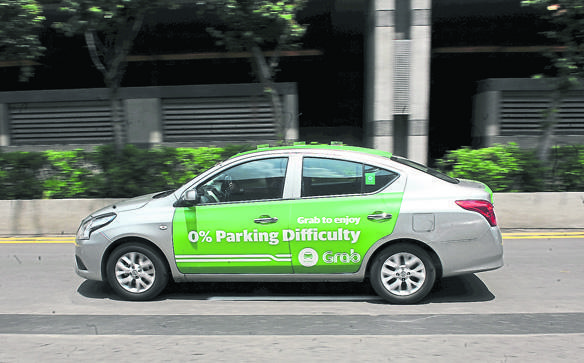By MARK RAO
SO YOU just got laid off and you need to keep things going, and you need a steady source of income that could keep you afloat in the longer run.
One of the simplest solutions is to join one of the many ride-sharing outfits as a driver. Chances are, if you work hard enough, you might be making more than what you previously earned.
Even if you do not have your own car, you can opt to “rent and drive” any of the models offered by the ride-sharing company of your choice.
All you need is a driving licence and you’re good to go.
You might not think that this was possible a few years ago. When the ride-sharing concept was first introduced in Malaysia, many also thought that it was just a fad that might go as fast as it came.

The government’s decision to legalise the revolutionary system a couple of years ago was certainly a real game changer.
Even before the business became legit, ride-sharing companies were already expanding their operations with packages and promotions to woo more customers.
When the amendments to the Land Public Transport Act 2010 and Commercial Vehicles Licensing Board Act 1987 were officially passed in August last year, leading ridesharing companies became even more aggressive, with more new players entering the market.
With e-hailing laws scheduled to be gazetted this year, industry players are projected to find equal amounts of success (and failures) in the soon-to-be regulated operating environment.
Grab
Since its humble beginning as a taxi-based e-hailing app in Malaysia back in 2012, Grab has grown to be the market leader not only in the country, but in South-East Asia as well.
The course taken by the ride-sharing company has been one of expansion, operating in 168 cities across eight Asean countries, boasting over 2.3 million drivers and commanding 95% of third-party taxi-hailing apps today.
Based out of Singapore, the company is now entering the e-money game via its e-wallet service, Grab-
Pay, having already received central bank approval to launch the online payment platform in Malaysia and begun commercial operations in Singapore.
The e-wallet presently facilitates over 3.5 million transactions daily and a billion transactions annually.
With a strong financial backing which saw the company securing approximately US$4.63 billion (RM18.52 billion) in investments since May 2014, Grab has been striving on the principles of a sharing economy to become a leading tech player in the region.
With reports that the leading e-hailing provider for the region is looking to buy a stake in Uber’s South-East Asian business, Grab appears to be sealing its dominance in the market by taking over its biggest competitor.
Uber
Kick-starter ride-sharing company Uber Technologies Inc has a strong foothold in Malaysia’s e-hailing market with operations spanning 15 cities across the country.
Uber has a strong foothold in Malaysia’s e-hailing market with operations spanning 15 cities across the country
It might be dwarfed by Grab’s 28 cities of operation, but the San Francisco- headquartered e-hailing player still provides a competitive ridesharing alternative in Malaysia as users often alternate between the two companies based on price-point and availability.
Uber was further responsible for making the concept of securing a ride with the touch of a button, an idea born in the snowy Parisian streets back in 2008, into an everyday reality for the world.
The company has weathered its own storms since its inception in 2009. Recently, its internal issues at the key management level grabbed media’s attention while dealing with increasingly stringent regulations internationally.
Despite Malaysia giving the green light to e-hailing, the fate of Uber in the country is unclear ahead of reports that the company is looking to divest out of its South-East Asian operations.
Details are sketchy at the moment with, neither Grab nor Uber, willing to comment on the speculation.
The deal presents an opportunity for the latter to unlock some cash as it seeks to recover to profitability.
Riding Pink
The first of its kind in Malaysia, Riding Pink is a ride-sharing platform for and by women, aimed at providing female drivers an alternative source of income and a reliable, same-gender passengers, safe public transport.
Founder Denise Tan conceived the idea when she realised how difficult it was to re-join the workforce after becoming a stay-at-home mother to support her family.
Having observed that there were no ride-sharing services exclusive to women in the country, especially in light of growing safety concerns, Tan and her husband began commercial operations for the service in October 2016, charging a RM1 base rate and RM1 for pre-booking.
The platform measured over 100 drivers early this year and is still very much in its infancy with no mobile-based app to its name. Bookings can be made on the company’s Facebook page, or via WhatsApp.
Operating as a women-exclusive ride-sharing service, Riding Pink could carve a niche within the rapidly growing e-hailing industry by catering to a presently underserved market.
PICKnGO
The rapid rise of e-hailing services in Malaysia left the fate of taxi drivers in the balance as they struggled to break even amid the competitive environment.
Pick N Go Sdn Bhd — the taxibased e-hailing app servicing the Greater Kuala Lumpur area — aims to provide a lifeline to the increasingly disenfranchised taxi community by providing a cost-competitive alternative to mainstay e-hailing providers Grab and Uber.
The mobile-app utilises metered rates over surge pricing, the latter of which can result in Grab and Uber rates to be as much as three times higher than average.
Bringing in only registered and licensed taxi drivers, the company is looking to secure 10,000 drivers on the platform within a year from its official launch on Aug 7 last year.
Having secured approximately 5,000 mobile-app downloads to date, PICKnGO is a joint venture between five taxi companies that is striving to provide convenient, consistent and competitive taxi services in an industry measuring some 180,000 drivers nationwide.
Dacsee
In an increasingly saturated operating environment, finding a niche becomes not only a novel, but needed approach in gaining a foothold in the market.
Decentralised Alternative Cabs Serving and Empowering Everyone (Dacsee) is doing just that by using blockchain technology to provide ride-sharing users transparency, and drivers greater control over their earnings.
Akin to the multi-tier marketing model, drivers on the Dacsee platform are allowed to form their own fleets to derive and earn their own commission, while the company itself will only charge 1% to 2% from the drivers’ earning.
This is significantly lower than the 20% to 25% commission rates collected from Grab and Uber. All transactions on the decentralised platform will use Ethereum ERC20 tokens to ensure transparency for both drivers and users.
Dacsee is aiming to secure a customer network of 50,000 people when it launches operations in April this year, paving the way for innovative solutions in a tech-driven industry.
MULA Car
E-hailing services have played a pivotal role in ensuring last-mile connectivity for commuters as journeys to and from work begin and end in a car.
Mula Car International Sdn Bhd is providing this connectivity in style by offering users their pick of premium and luxury multi-purpose vehicles and compact cars for their journeys.
The mobile-based e-hailing app has a fleet of 250 cars providing transportation and logistics services in its home base of Penang, while having grown its business by 20% every month since launching in May last year.
The growth has encouraged the company to expand its fleet to 750 cars with an expansion plan that would cover Johor, Melaka, Seremban (Negri Sembilan) and Ipoh (Perak) before the end of the year.
By 2019, the company is anticipated to offer as high as 2,000 MULA cars operating in Malaysia.
Going to and from work in luxury could soon be a reality for Malaysian commuters.
